Same day flower delivery available
Same day flower delivery available
Careful now! Not all pretty plants are as placid as they seem! Mother Nature always finds a way and sometimes that way is achieved by poisonous means. As plants cannot run from predators, many develop toxicity as a defence mechanism. In order to continue growing and prospering, these plants are lethal to humans and animals! Around 1000 plant species in Australia are known to be toxic and many more are sure to cause rashes and discomfort. You’ll be surprised by which plants can cause you harm if you get too near. Find out more by reading through our list of these Top 10 Deadly Plants!

We bet this one is a shocker! Sure, apples are highly nutritious and popular snack time treats but did you know that at the core of that tasty crisp fruit lays a predator waiting to attack? Apple seeds contain cyanogenic glycosides, which can lead to acute cyanide poisoning. The effects of cyanide poisoning are extensive and include; rapid respiration, a drop in blood pressure, rapid pulse, headache, dizziness, vomiting, diarrhoea, mental confusion, stupor, blue discolouration of the skin (due to a lack of oxygen (known as cyanosis)), twitching and convulsions. Terrible as these symptoms are, another possible outcome is death! So, if you know anyone that takes pride in eating apples, core and all, perhaps you should do them a public service and advise them that excessive consumption of apple seeds can be fatal!

This beautiful bloom is an Australian favourite (we even have a National Rhododendron Garden in Victoria!) but don’t let its beauty deceive you – this vibrant plant is more potent than it seems. No part of this beauty is safe for animals or humans! With the pollen and nectar containing a toxin called grayanotoxin, grazing animals have been known to fall victim to these poisonous blooms. More insidious than this, is that people have become ill from eating honey made by bees that use rhododendron pollen in their hives! Consumption of petals or leaves can lead to violent nausea accompanied by watery eyes and a drooling mouth. Awful as this outcome sounds, it is only a precursor to more serious symptoms that can include comas, violent seizures and eventually, death.
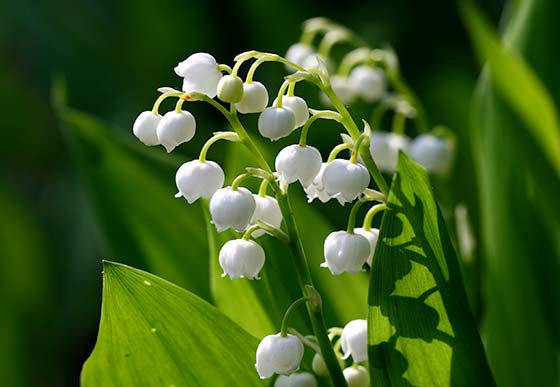
Sweetly scented but highly poisonous, Lily-of-the-Valley is not one to be trifled with! Every inch of this lovely flowering plant is desperately toxic, particularly it’s vibrant green leaves. Containing convallatoxin, this beautiful bloom can have serious effects if ingested. Known to increase heart contractions, Convallatoxin is no pushover toxin; a single bite can cause headaches, hot flashes, hallucinations and irritability, as well as turn hands into blotchy, clammy versions of their former selves. Serious reactions to convallatoxin are not to be scoffed at either. As your heart rate slows down, the body can become comatose. Terrible as that outcome is, it is still preferable to the final potential side effect, death.
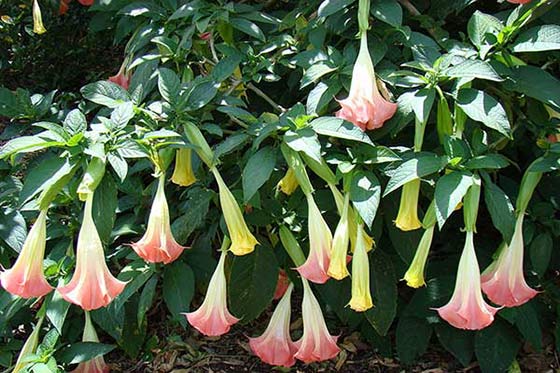
Unique and alluring, the Angel’s trumpet gets its name from the shape of its large, billowing trumpet-shaped blooms. While trumpet-shaped they may be, angelic they certainly are not! An intriguing appearance and fragrant scent deviously draw attention to this truly toxic flowering plant. Despite its pleasant appearance, the Angel’s trumpet is devastatingly toxic, particularly its leaves and seeds. With alkaloids such as scopolamine and hyoscyamine, ingestion of this plant has a horrifying list of outcomes including, diarrhoea, confusion, migraines, paralysis and even death.
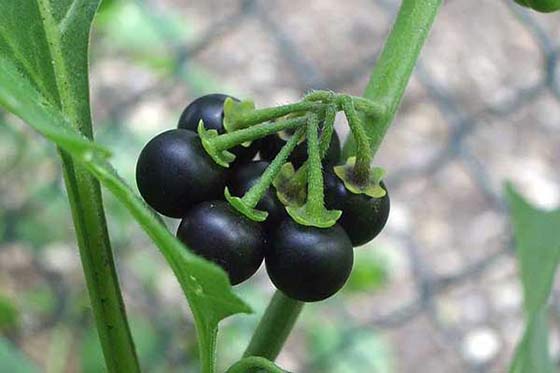
Don’t eat the berries! It seems cliché but everyone should know by now not to eat the pretty wild berries they pass by when walking in the outback and the berries of Deadly nightshade are no different. Also known as 'devil's berries' or 'death cherries', the name presents no illusions - Deadly nightshade is terribly toxic! Both its foliage and its berries contain tropane alkaloids, which can be harmful to both humans and animals. Deadly nightshade has been known to cause hysteria, hallucinations, erratic behaviour and delirium. Ingestion of a single leaf or about 20 berries can be fatal to adults. Deadly nightshade has a colourful history and was once popularly used to tip the ends of arrows during battles. In Ancient Rome, it was used as a poison and was rumoured to have caused the death of Emperor Augustus!
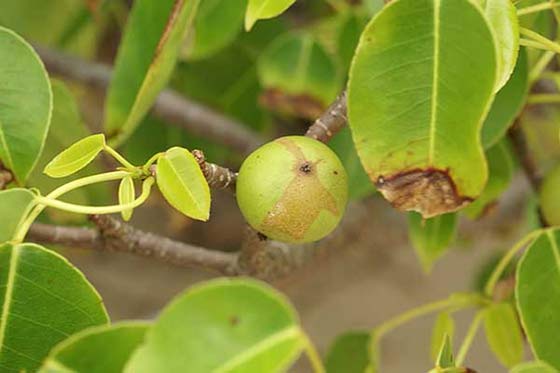
What’s scarier than a colourful, sweetly scented flower that’s toxic if ingested? Perhaps a tree that is so toxic you don’t need to eat it to feel its effect. Harmful outcomes are caused by the toxins hippomane A and B, which are present in every part of the tree. Found throughout the Florida Everglades, Central America and the Caribbean, the Manchineel is so toxic that inhaling sawdust or smoke from this dangerous tree can result in a series of uncomfortable side effects, including coughing, laryngitis and bronchitis. Some go so far as to suggest that even standing in the vicinity of this tree during a rainstorm can be hazardous. Runoff from the Manchineel could result in rashes and itching. No human is safe and neither is their car. It’s said that the sap from the Manchineel can do serious damage to the paint, so be sure to park far from this seemingly innocuous beauty. Now comes to the effect of ingestion. The Manchineel tree produces sweet crabapple-like fruit but take a few bites and feel the wrath of the Manchineel. The fruits are known to cause blisters on the mouth and cause the throat to swell shut.
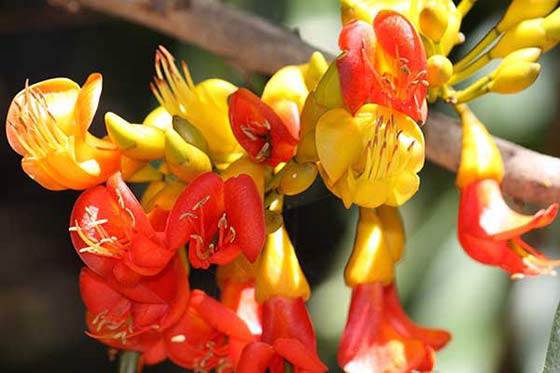
Vibrantly coloured, this yellow and orange flowering plant is much more dangerous than it might immediately seem. Native to Queensland and New South Wales, the Black Bean (also known as the ‘Moreton Bay Chestnut’, produces large pods filled with toxic seeds between March and May each year. While small in size (each seed weighs approximately 30grams), ingestion can cause vomiting, diarrhoea or have even more serious implications if medical attention is not sought, for both humans and animals. Due to their extensive root systems, Black Beans should not be planted within 10 metres of drainage lines, sewers, house foundations, garages or swimming pools. While Black Bean seeds are shown to contain alkaloids, these same alkaloids are shown to have anti-HIV and anti-cancer properties. Interestingly, the Black Bean seeds are also used as food in some aboriginal communities (after extensive preparation, of course).
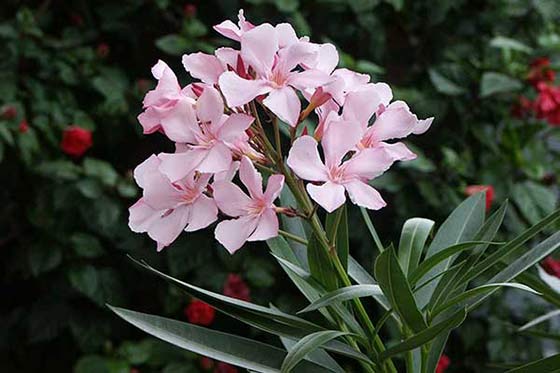
Strangely enough, this incredibly toxic plant is a very common garden feature all around the world and is even found in school yards. Every part of this plant is toxic and can be lethal if ingested, particularly for children. Similarly to the Manchineel, Oleander can cause harm from smoke through burning, which too, can be lethal. According to the Toxic Exposure Surveillance System (TESS) in 2002, there were 847 known human poisonings in the US caused by oleander. Cardiac glycosides reside inside the leaves, flowers and fruit of the Oleander plant. These parts of the plant are likely to cause cardiac arrest if ingested. Ingestion can affect the gastrointestinal system, the heart, and the central nervous system. While mild reactions include nausea, vomiting, excess salivation and abdominal pain, the impact on the nervous system is the most serious concern, with symptoms including tremors, seizures, collapses, and comas that can lead to death. They may be pretty and colourful but there is nothing blasé or temperate about this popular plant.
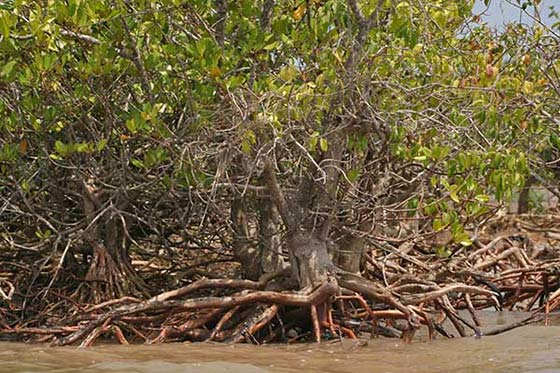
The Milky Mangrove is also known as, ‘Blind-Your-Eye-Mangrove’ or ‘River Poison Tree’. It is as it says; the Milky Mangrove is highly poisonous and can cause temporary blindness if the sap comes into contact with a person’s eye. If sap makes contact with the eye, continuous flushing must take place for at least 15 minutes and medical attention should be sought. Found in Western Australia, Queensland and New South Wales, its milky sap can also cause skin irritation and blistering. Not one to be toyed with, beware the sap of the Milky Mangrove.